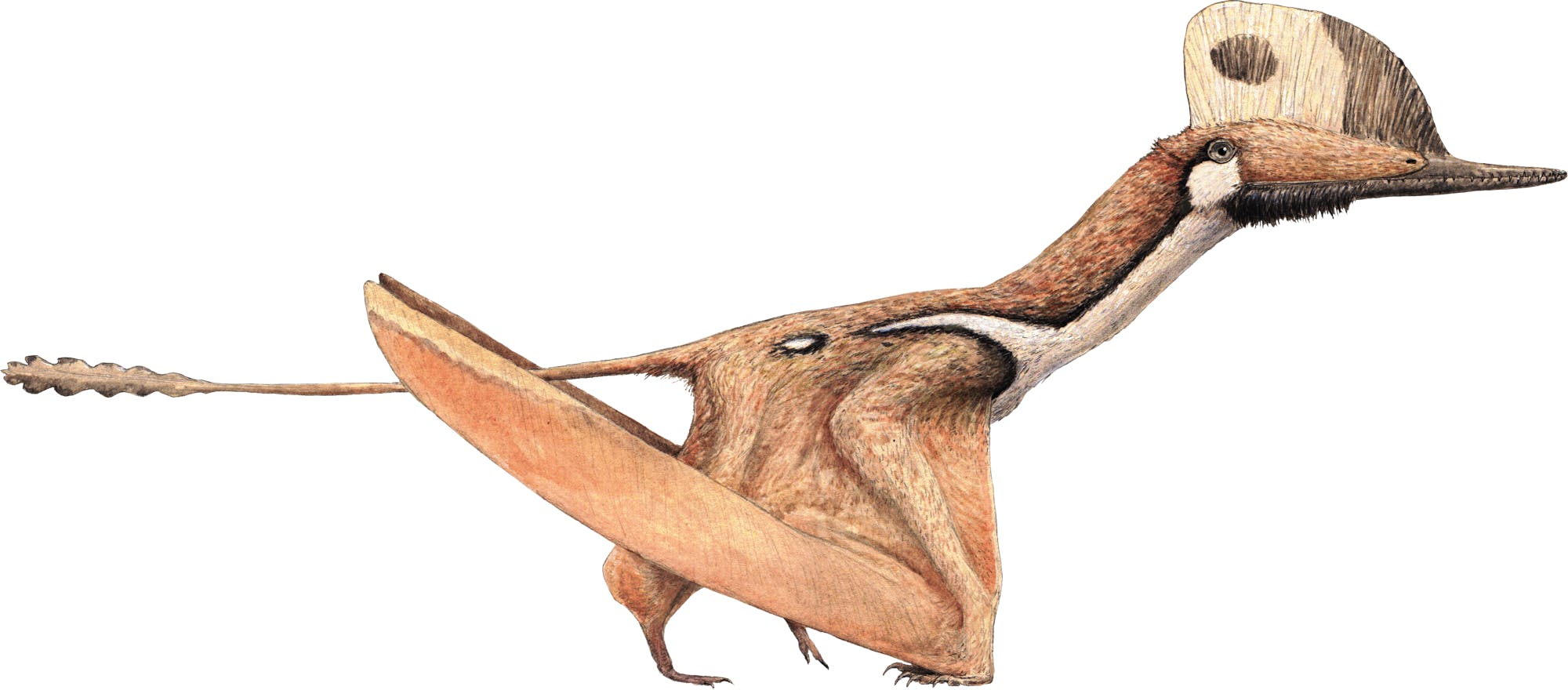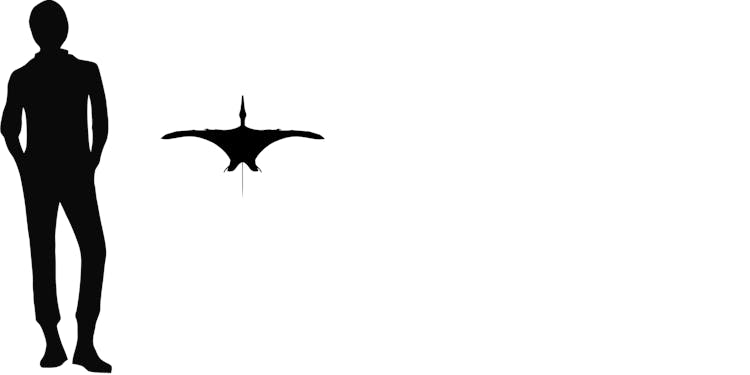




Darwinopterus took the world by storm when its discovery was first published. It was everywhere, embellishing the covers of newspapers and scientific magazines as an aerial hunter, jaws agape as it flew after feathered dinosaurs close to its size.
Darwinopterus looked similar to a dragon in these images but not everything about them was correct. For one, the animal's lifestyle was not that of a top predator like an eagle. Also, it did not have the powerful jaws and teeth of a general aerial raptor. And of course pterosaur feet never evolved for prey capture so it was like neither a predatory bat nor a bird of prey. In fact, it was far too weak to take on animals of a similar size. Rather, it is now known that Darwinopterus' diet varies according to the species. The first found was D. modularis, and it is currently thought to be an animal that fed on small prey, the victims consisting of insects. Another one, D. linglongtaensis, had cone-shaped teeth while modularis' teeth were more like spikes.
Darwinopterus modularis gets its species name from the fact that it seems to have undergone "modular evolution". This is where different body parts do not appear in systematic succession. It was clearly a non-pterodactyloid with certain features of a more advanced pterosaur. This put Darwinopterus as a "missing link" between more basal and more derived flying reptiles. Its long neck vertebrae are a feature of more advanced animals while the long tail belongs on primitive pterosaurs.
It belongs to the family of non-pterodactyloids called wukongopterids. Almost all of them hail from one location in China, the Tiaojishan Formation. This rock formation dates back to the Middle Jurassic Callovian to Bathonian Stages, roughly 161 million years ago. Darwinopterus lived in a temperate forest of ginkgo, conifers and bennettites. It was also home to numerous tiny feathered dinosaurs, ranging from cat-size to sparrow-size. The dominant pterosaurs were the wukongopterids. Pretty much all of them were somewhat similar to a medieval dragon in terms of appearance. For one, they had long tails and narrow wings, and long toothy jaws, while their skulls were topped with crests of soft tissue. Darwinopterus was no different. Also none of these creatures was very large. The biggest Darwinopterus species is D. robustodens, named for its crushing teeth. It was likely an animal that tackled a diet of hard-shelled beetles while its neighbors and relatives took on softer-bodied prey. Its body was as big as robin while its wings were longer in proportion.
Darwinopterus also seems to have had marked sexual dimorphism. Broader pelvises have been found in the specimens thought to be female. The males probably sported massive crests in relation to the females and this was used as a display structure to both warn rivals and to attract a mate. The skull only had a a serrated bony keel to support this soft tissue crest, and it was the only piece of headgear on the animal.
Pterosaur eggs are quite rare in the fossil record. They are thought to have been soft-shelled like those of other reptiles like lizards and snakes. A female pterosaur, once thought to be of this genus was discovered in the Tiaojishan with traces of an egg still in her body. The specimen in question is known as Mrs. T and she still had an egg in her system when she died. This specimen had two ovaries and laid soft-shelled eggs. The young, or flaplings, may have been able to fly just after hatching, thus shattering previous images of pterosaurs brooding their chicks in nests. This also points to a baby that put in all its energy into flight rather than growing up fast during its youth.
However later studies may have changed even this idea. One study proved that she might not have been a Darwinopterus at all. Rather, Mrs. T may have been a specimen of the closely related but daintier Kunpengopterus. She also had two eggs in her, meaning she two oviducts rather than one. Furthermore, studies of baby pterosaurs indicate that they did go through a flightless stage before maturity, although the extent of parental care is still unknown.
